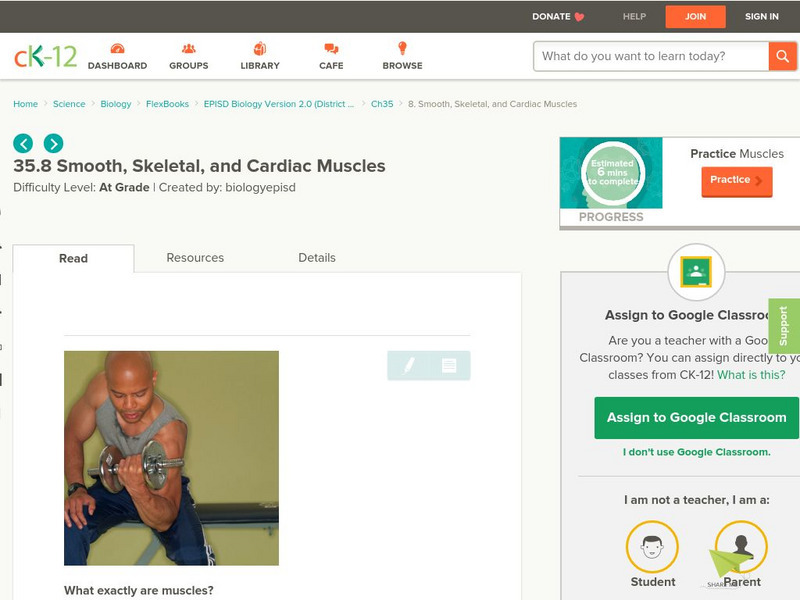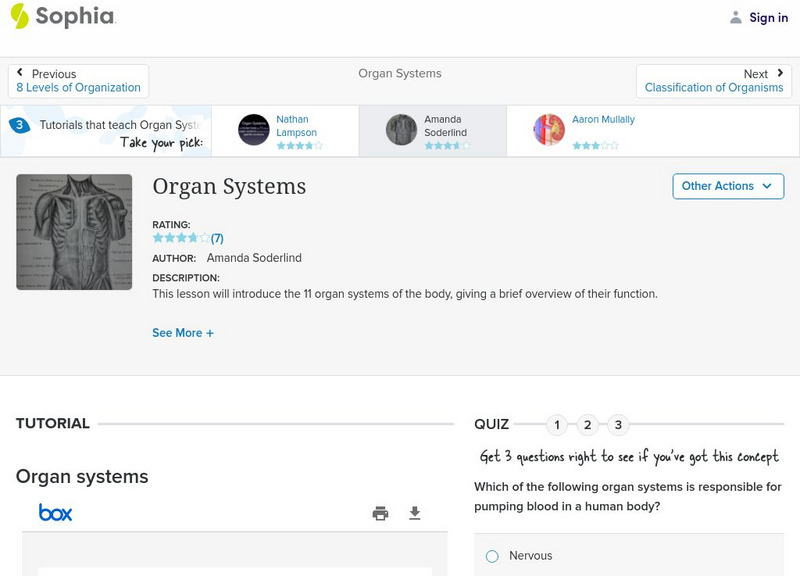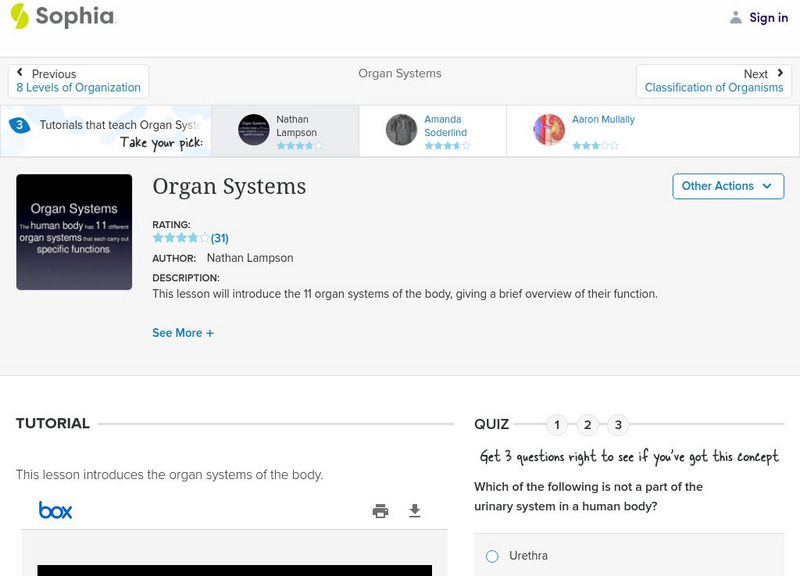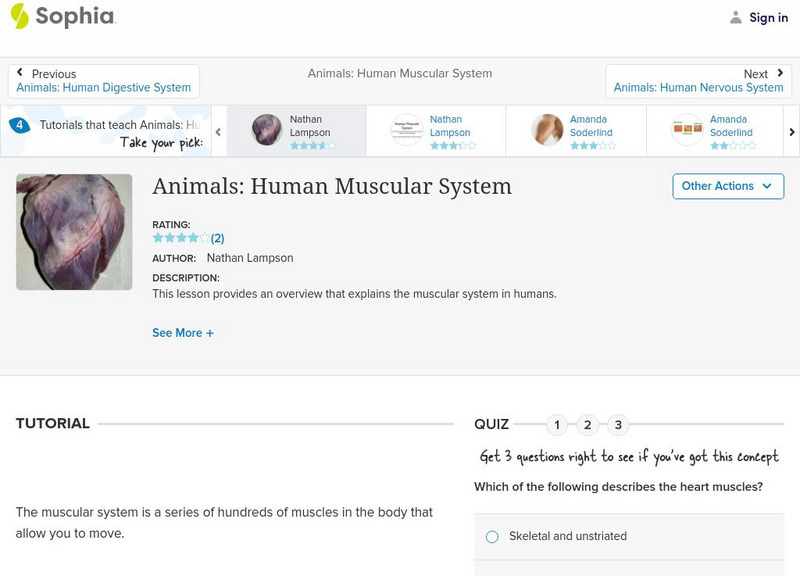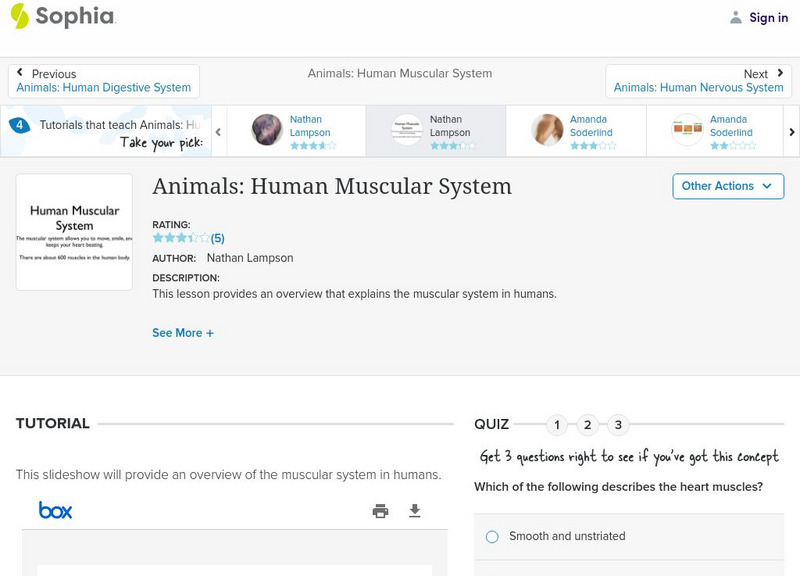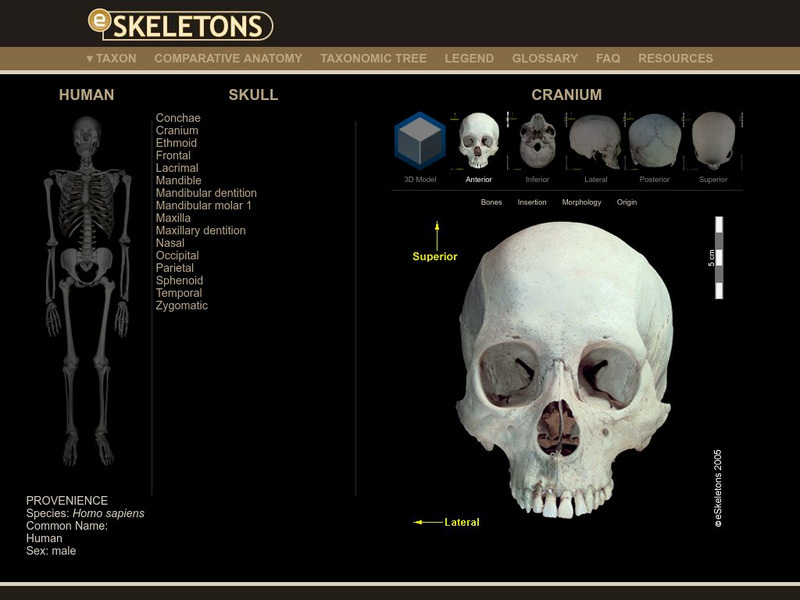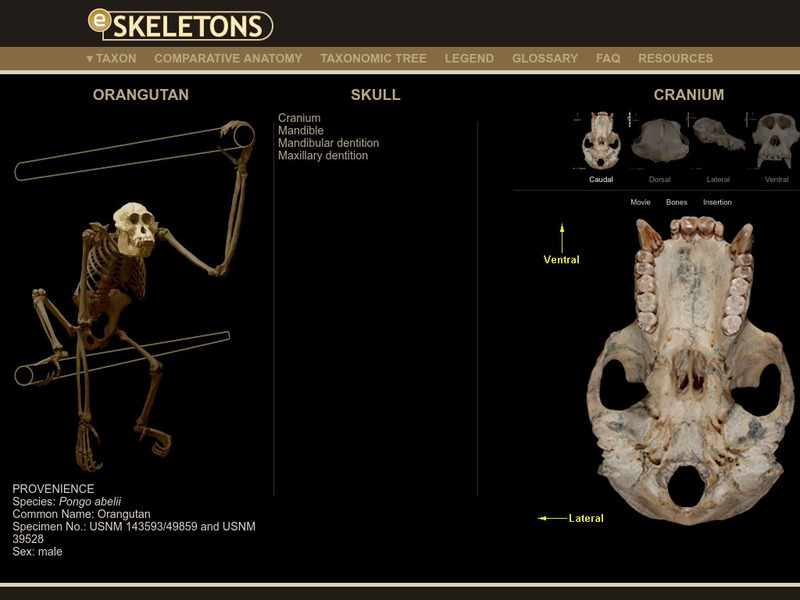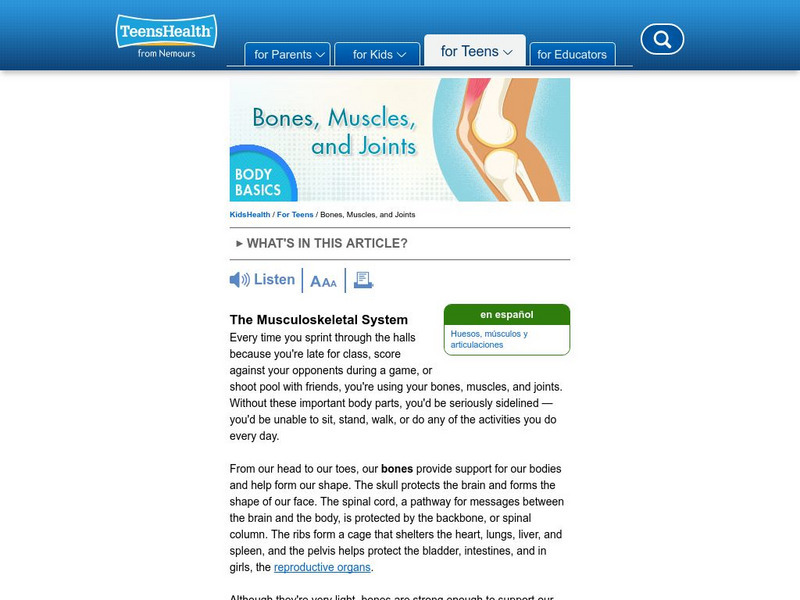CK-12 Foundation
Ck 12: Episd: Smooth, Skeletal, and Cardiac Muscles
[Free Registration/Login may be required to access all resource tools.] Identify and describe the primary types of human muscle tissue.
OpenStax
Open Stax: Interactions of Skeletal Muscles
This site rpovides information regarding the interactions of skeletal muscles, including their fascicle arrangement and their lever systems.
Other
Get Body Smart: Functional Anatomy of Skeletal Muscles
Brought to you by Get Body Smart, students can learn about the human musculoskeletal system through this easy-to-access tutorial. Sections include muscles that act on the arm, shoulder, forearm, wrist, palm, digits, anterior thigh,...
CK-12 Foundation
Ck 12: Biology: Muscular System Study Guide
Review the structure and function of the human body's muscular system.
Sophia Learning
Sophia: Organ Systems: Lesson 2
This lesson will introduce the 11 organ systems of the body, giving a brief overview of their function. It is 2 of 2 in the series titled "Organ Systems."
Sophia Learning
Sophia: Organ Systems: Lesson 1
This lesson will introduce the 11 organ systems of the body, giving a brief overview of their function. It is 1 of 2 in the series titled "Organ Systems."
TeachEngineering
Teach Engineering: Skeletal System Overview
Young scholars will learn about bone structure, bone development and growth, and bone functions. Later, students will apply this understanding to answer the Challenge Question presented in the "Fix the Hip" lesson plan and use the...
Curated OER
Kids Health: How the Body Works Movies and Activities
Short, colorful movies explain each of the body's systems: skeletal, cardiovascular, digestive, urinary, respiratory, endocrine, skin, immune, muscular, and nervous. Once you've seen the movie, click on the Activity Page link for...
Sophia Learning
Sophia: Animals: Human Muscular System: Lesson 2
This lesson provides an overview that explains the muscular system in humans. It is 2 of 4 in the series titled "Animals: Human Muscular System."
Sophia Learning
Sophia: Animals: Human Muscular System: Lesson 4
This lesson provides an overview that explains the muscular system in humans. It is 4 of 4 in the series titled "Animals: Human Muscular System."
Sophia Learning
Sophia: Animals: Human Muscular System: Lesson 1
This lesson provides an overview that explains the muscular system in humans. It is 1 of 4 in the series titled "Animals: Human Muscular System."
CK-12 Foundation
Ck 12: Biology: Smooth, Skeletal, and Cardiac Muscles
[Free Registration/Login may be required to access all resource tools.] An overview of the three types of human muscle tissues.
Untamed Science
Untamed Science: Human Biology: Musculatory System
Learn about the three types of muscle tissue, how a muscle contracts, and how muscles are adapted for exercise. [3:40]
eSkeletons
E Skeletons: Human
Studying the skeletal parts of a human? Click on various parts of the human skeleton and proceed to select the items to view in detail.
eSkeletons
E Skeletons: Baboon
This interactive, digital laboratory provides students with a way to examine and learn about the skeletal anatomy of the Baboon.
eSkeletons
E Skeletons: Slow Loris
This digital laboratory provides an interactive environment in which to examine and learn about skeletal anatomy, in particular the skeleton of the slow loris.
eSkeletons
E Skeletons: Lesser Bushbaby
This digital laboratory provides an interactive environment in which to examine and learn about skeletal anatomy, in particular the skeleton of the lesser bushbaby.
eSkeletons
E Skeletons: Gibbon
This digital laboratory provides an interactive environment in which to examine and learn about skeletal anatomy, in particular the skeleton of the gibbon.
eSkeletons
E Skeletons: Orangutan
This digital laboratory provides an interactive environment in which to examine and learn about skeletal anatomy, in particular the skeleton of the orangutan.
eSkeletons
E Skeletons: Ruffed Lemur
This digital laboratory provides an interactive environment in which to examine and learn about skeletal anatomy, in particular the skeleton of the ruffed lemur.
OpenStax
Open Stax: Embryonic Development of the Axial Skeleton
The axial skeleton begins to form during early embryonic development. However, growth, remodeling, and ossification continue for several decades after birth before the adult skeleton is fully formed. Knowledge of the developmental...
National Institutes of Health
Nih Curriculum Supplement for Middle School: Looking Good, Feeling Good
A great resource from the Office of Science Education which provides a curriculum for teaching about the musculoskeletal system, the skin system and how they interact. This curriculum emphasizes choices teens can make to ensure good...
Curated OER
Kids Health: Bones, Muscles and Joints
The anatomy of the musculoskeletal system and what the bones, muscles and joints do in our bodies are explained. Interactive diagrams show the internal structure of a bone, and how muscles and joints work together. Major disorders of the...
Curated OER
Kids Health: Bones, Muscles, and Joints
This article from Family Doctor.org provides in depth terminology and helpful diagrams. This site has links to related articles to learn more about the musculoskeletal system.


